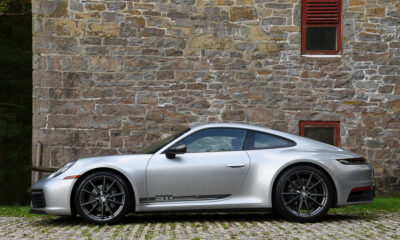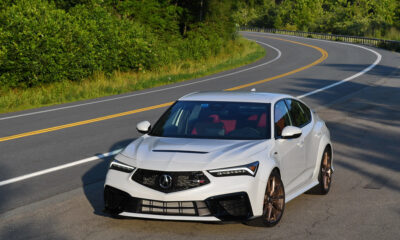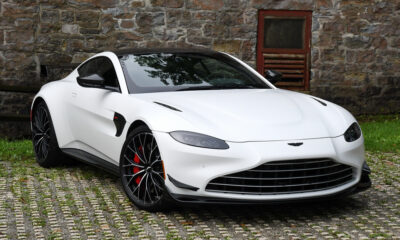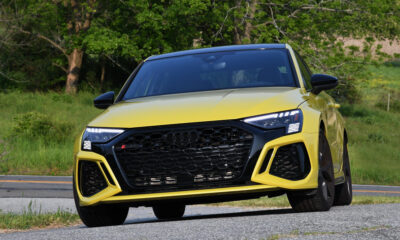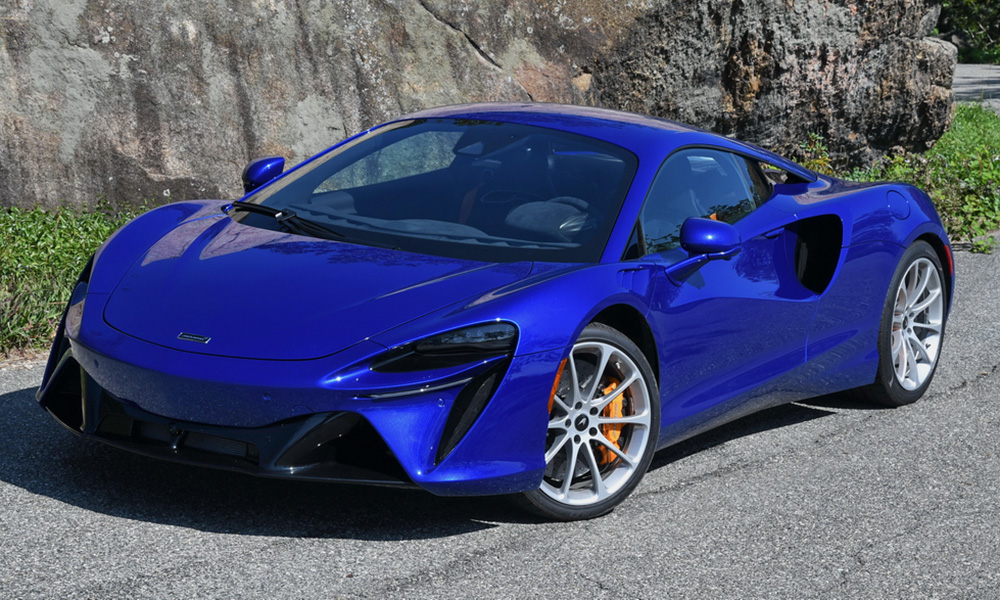
Photo: David Haueter
It was just 2011 when McLaren started producing the MP4-12C, which was the first production car designed and built completely by McLaren.
In the last dozen years, the company has become a true rival to the likes of Ferrari and Lamborghini in the supercar market – an impressive feat considering how long those Italian marques have been around.
McLaren’s latest model, the Artura, is the newest a new model has been in the history of the company since the first MP4-12C. Every McLaren model since the MP4-12C has shared similar components and all of them have used a V8.
The Artura departs from tradition by using a twin-turbocharged V6 instead of a V8, combined with an electric motor with a 7.4-kWh lithium-ion battery.
The Artura is the first McLaren with a V6, but it’s not the first with a hybrid powertrain. The P1 was the first hybrid for McLaren and the first hybrid supercar in the world when it came on the scene back in 2013. As V6 engines go, the new unit in the Artura is a gem.
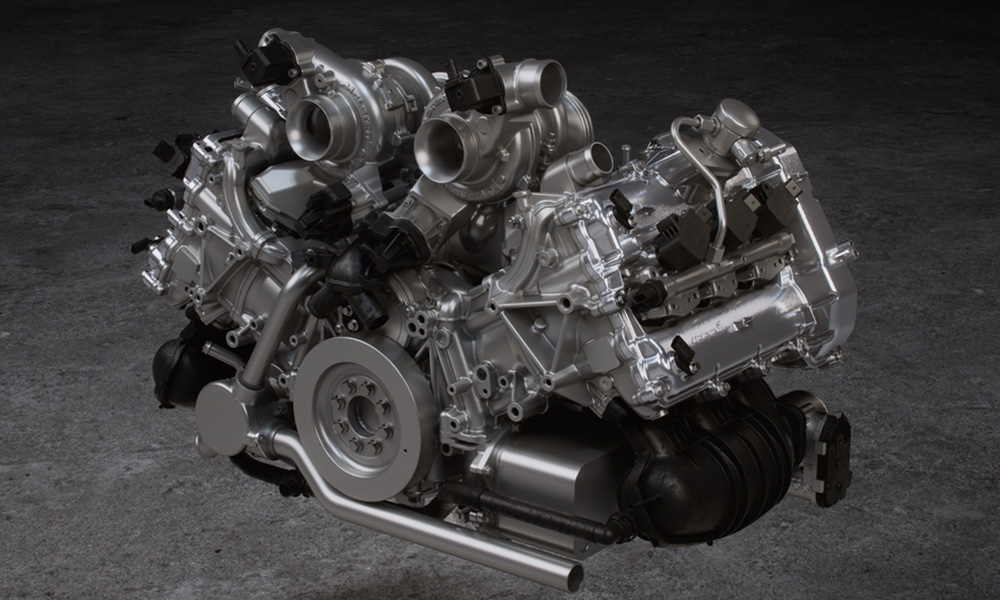
Photo: McLaren
The compact 3-liter unit puts out 577 horsepower and 431 foot-pounds of torque and weighs around 110 pounds, lighter than the previous V8.
The electric motor in the Artura is also compact and bumps the supercar up to a combined output of 671 hp and 531 lb.-ft. Fully charged, the electric-only range is around 11 miles, and the Artura uses only electric power for reversing.
The Artura did gain some weight with adding an electric motor, but at 3,443 pounds.
It still weighs less than the Lamborghini Hurácan and Ferrari 296GTB. More importantly, the weight is positioned low in the car to reduce the center of gravity.
The Artura is new in other ways besides the powertrain. The carbon fiber tub (that weighs only 181 pounds) is new and is now produced in-house at the McLaren carbon fiber factory in Sheffield, England.
It’s the first McLaren to use an electronically-controlled limited slip differential and the rear suspension in a new multi-link setup that McLaren says improves stiffness. The dual-clutch automatic gearbox now has eight speeds instead of seven, and the interior has been modernized, with a much easier to use infotainment system as well as other controls.
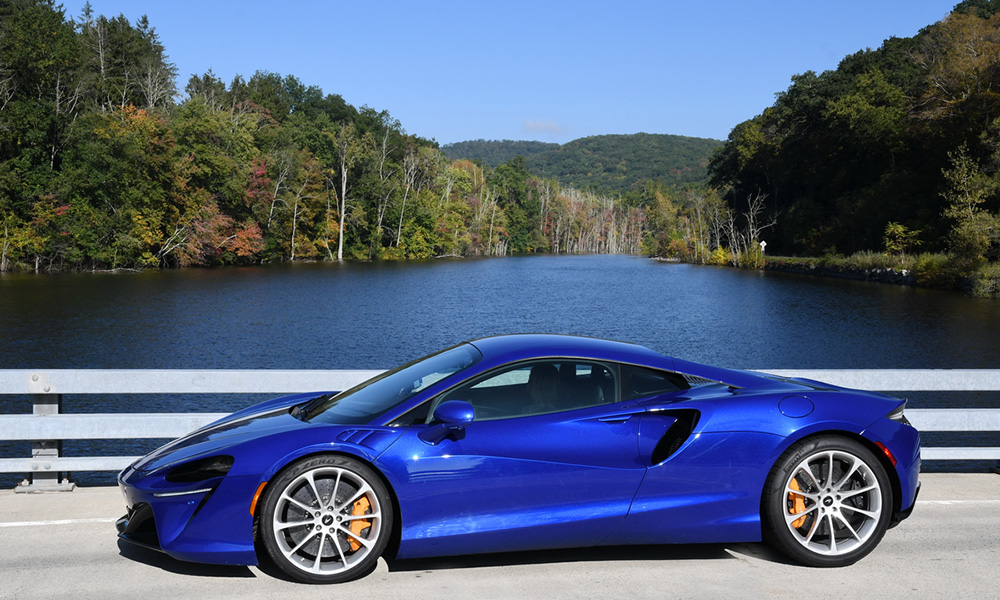
Photo: David Haueter
The design of the Artura is quintessentially McLaren. There’s no mistaking it for any other brand of car and the shape is lithe and athletic.
You could even call it pretty from some angles, but it also looks aggressive and fast. Getting into the driver’s seat requires some dexterity but once you’re in the driving position is perfect and there’s great visibility, with the road intimately close through the front windscreen.
The steering wheel is nice and simple, with no buttons or switches, just big paddles for manual shifting.
McLaren likes to keep things simple in the cockpit and the Artura is easy to just get in and drive.
There are simple pushbuttons on the center console for gear selection, a new infotainment system that is intuitive and easy to use, and easy to reach toggle switches for powertrain settings (on the right) and suspension (on the left).
There’s now a single button to push to lift the front axle if needed, and the car has niceties like adaptive cruise control and Apple CarPlay, which is unusual for a supercar.
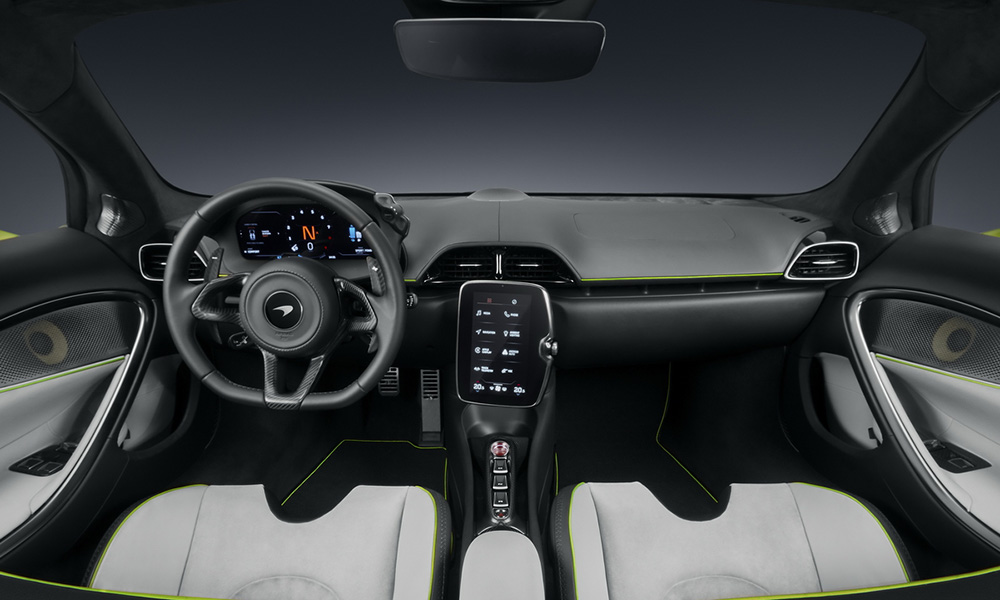
Photo: McLaren
Once you start putting some miles on the Artura, you realize that this is the most user-friendly McLaren ever, even more so than the GT, but it still has the supercar feel and excitement.
The engine sounds bit more subdued than V8-powered models, but I think it still sounds great with the Sport exhaust option that was on our test car.
This car is blisteringly fast when you plant the throttle and can hit 60mph in 2.6 seconds, which is faster than the Ferrari 296GTB.
We expected the Artura to be fast, but the handling and ride quality is the element of the car that really stood out to me. The Artura has great balance and responsiveness on a twisty stretch of road and delivers loads of feel through the seat and the steering wheel.
It’s a great experience to drive this car on a road you know well with all the communication it gives to the driver, the power delivery and that great view out the front.
I found that having the powertrain and suspension settings both in Sport mode was the best combination (Comfort and Track are the other settings).
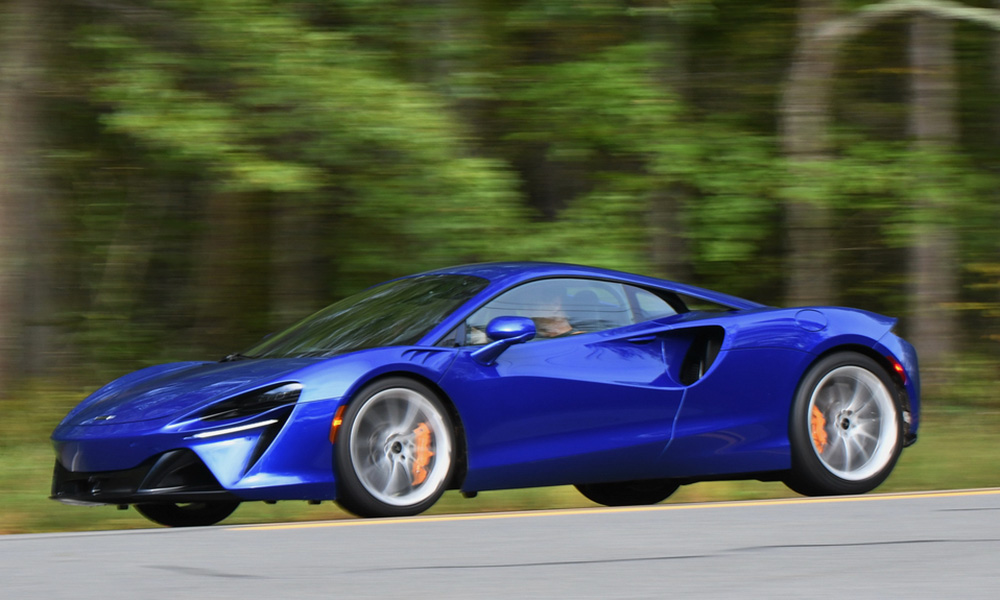
Photo: Ingrid Kretschmann
The competency of the Artura in normal daily driving is what makes this car such a great all-around supercar.
The suspension is compliant and comfortable in Comfort mode when driving around town and the engine is surprisingly quiet with the powertrain setting in Comfort.
If you really want to be stealthy, you can drive in electric only through town and not make much sound at all. This is truly a supercar you could drive all the time if you wanted to, but it still gives you a thrill every time you climb into it and never feels mundane.
At a starting price of around $233,000 USD, the Artura is a bargain when it comes to supercars of this level, and it’s priced well under some of its primary competitors.
The Ferrari 296GTB starts at nearly $100K more at around $338,000, while the Lamborghini Hurácan starts at around $275,000. The Artura is even priced under cars like the Porsche 911 GT3 RS, which starts at around $241,000.
Our test car was loaded up with options such as the carbon fiber interior package, performance spec, Clubsport seats and the Sport exhaust that brought the price to $272,010, which was still under the starting price for the Lamborghini and well under the Ferrari.
The Artura is a great car as it is, but if McLaren follows the pattern they’ve had with other models, we can expect to see other sub-models based on the Artura that raise performance even higher.
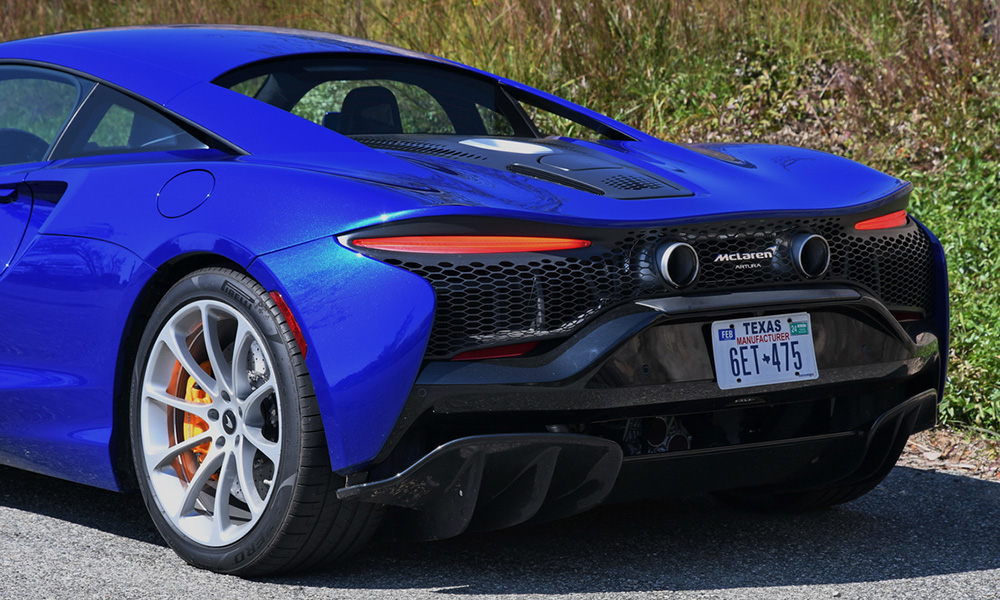
Photo: David Haueter



















